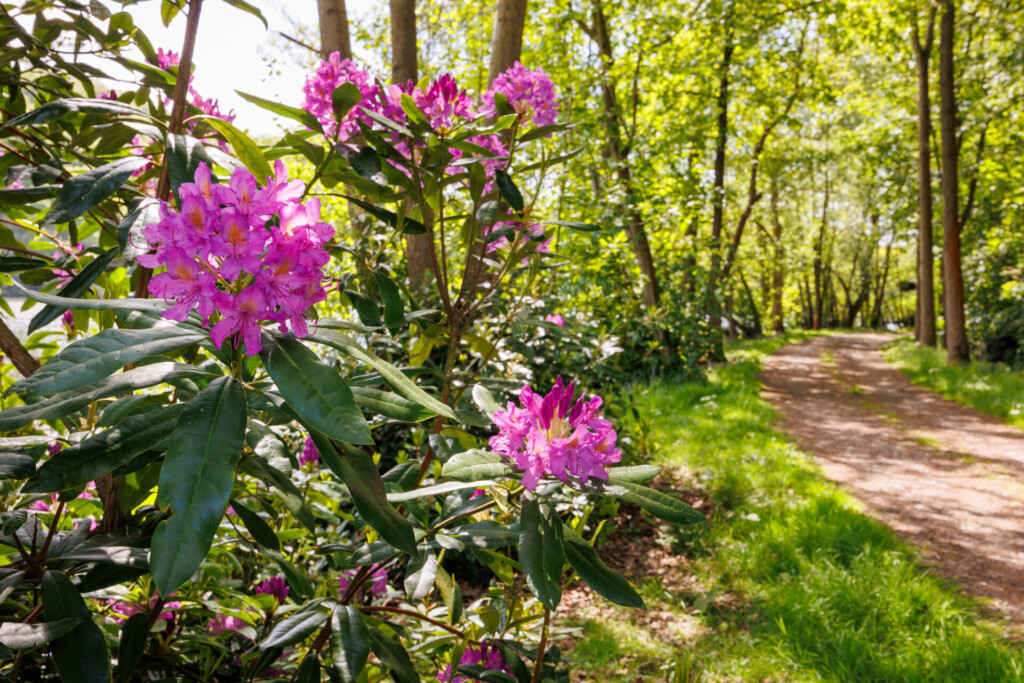TALK TO LODDERS’ biodiversity specialists
Primary contacts
Led by Victoria Longmore, Lodders’ team of experts can help advise you whether you are a landowner wanting to create a long-term conservation project that will deliver biodiversity units or, a developer needing to ensure that planning proposals are made with biodiversity net gain in mind.
RELATED TO BIODIVERSITY
Our Real Estate group can also advise on:
team
Meet our biodiversity specialists:
RELATED
Lodders news, insights and events relating to biodiversity advice
FAQS
Questions answered
Not sure that this is the service for you? Take a look at some of our frequently asked questions for more information.
Biodiversity net gain is an approach that aims to leave the natural environment in a measurably better state than beforehand, by creating or enhancing habitats in association with development work.
For property developers, this means that development proposals must create demonstrable and genuine gains for biodiversity. The gains are measured against the development site’s baseline conditions and quantified using the government’s biodiversity metric.
The requirements will come into force when the Environment Bill receives royal assent. There is no firm timescale as to when this will be, as the bill is currently making its way through the House of Commons, but it is likely to be late 2021. Many developers and landowners are, however, already gearing up to ensure they are ready, drawing on the burgeoning biodiversity and natural capital expertise at Lodders Solicitors.
We have been working in this developing area for a while, largely because of the pioneering work being done in our locality by Warwickshire County Council, as one of the local authorities chosen by government to run a pilot scheme.
We have become familiar with the concept of offsetting in the context of our carbon footprints, for instance, being able to offset the carbon dioxide produced in flying to holiday destinations by purchasing offsets that are then used to pay for tree planting. Biodiversity offsetting works along similar principles, and is designed to deliver effective and widespread biodiversity gain in a way that is easy for developers to use.
The Environment Bill sets out a ‘mitigation hierarchy’, which encourages developers to first seek to avoid harm by mitigating and enhancing biodiversity measures on site. If this can’t be done, the developer should aim to secure local compensatory habitat creation. As a third and final option, the developer must pay a tariff to fund cost effective habitat creation projects according to local and national conservation and natural capital priorities.
Biodiversity offset providers then offer for sale conservation projects that deliver biodiversity units which a developer can buy. Defra has proposed an outline tariff of £9,000 to £15,000 for each biodiversity unit.
For landowners there are clear opportunities to create long-term conservation projects that will deliver biodiversity units that can be sold to developers.
This service is often used property developers, businesses, etc.
Developers, meanwhile, need to ensure that their planning proposals are made with biodiversity net gain in mind, and that they are set out clearly to help the planning authority to readily assess, understand, and review the proposals.
It will also be important for developers to show they have investigated all on-site and local habitat options.
Development that adopts a net gain approach seeks to make its impact on the environment positive, delivering improvements after avoiding or mitigating harm as far as possible. Net gain is used as an umbrella term for both biodiversity net gain and wider environmental net gain.
The biodiversity net gain concept seeks measurable improvements for biodiversity by creating or enhancing habitats in association with development. Development proposals must lead to “genuine and demonstrable gains for biodiversity”, against baseline conditions, all of which are quantified using the government’s biodiversity metric (see question 3). To achieve biodiversity net gain, proposals must follow the ‘mitigation hierarchy’ which compels planning applicants to avoid harm in the first instance, then mitigate or finally compensate for losses on-site, off-site or through a combination of the two solutions. These measures will be required in planning conditions.
The government plans to mandate the use of the Defra Biodiversity Metric 2.0 to measure biodiversity losses and gains resulting from development or land management change. It is a spreadsheet-based tool populated with data acquired through ecological assessments before development and for the habitats proposed after development, whether on-site or off-site.
Users of the metric identify the site boundaries, divide the site into parcels of different types of habitat, and input information about the habitat type, condition and size of each parcel. The individual species present are identified, counted and recorded.
The metric assesses the quality of the site based on habitat distinctiveness, condition, strategic significance and connectivity, and then it quantifies the value of the site by translating the information into biodiversity units. Scarce and declining habitats will usually score more highly than more common habitats.
When a user needs to estimate the value (in terms of biodiversity units) of a future habitat, the metric will assess the difficulty of creating or restoring habitat, temporal risk from the difference in time between losing and gaining habitat and offsite risks, taking into account the proximity of the compensation site to the impacted site. So, easy habitats which are relatively easy to create but which take a long time to develop (such as tree planting) will generate a low number of units, as will schemes which are located a long way from the original loss.
a. Part 6 of the Bill sets out provisions relating to protections of habitats, nature and biodiversity. The provisions include a condition whereby a development cannot commence unless a biodiversity net gain plan is submitted and approved by the relevant local planning authority. Furthermore, the mandatory requirement for developers is to deliver a 10% biodiversity net gain (measured against the baseline conditions) in respect of any new development. In order to implement these requirements as smoothly as possible a transition period of two years has been proposed.
b. By way of background, Defra launched a consultation in December 2018 which ran for 10 weeks. The consultation was split into various parts which addressed issues such as the objectives of an effective net gain policy, what biodiversity net gain is and how it works in practice, whether to mandate biodiversity net gain and how a mandatory approach might be implemented most effectively. Respondents were asked to express their concerns or support at each stage and a summary of those responses along with the government response has been published by the government.
Through Clause 88 and Schedule 15, Schedule 7A will be introduced to the TCPA 1990 in relation to biodiversity net gain in England. These provisions of the Environment Bill will come into force on such day as the Secretary of State may by regulations appoint. While there is no indication as to when the Bill will be passed, Defra announced that the Bill will place the government’s 25 Year Environmental Plan (2018) on a statutory footing and its speedy return to Parliament following the General Election suggests that the government is committed to delivering on climate change solutions.
Once the baseline biodiversity units have been calculated (see question 3), the mandatory requirement of 10% net gain is added, indicating the amount of biodiversity units the scheme should yield at its conclusion. In practice this means that a development project on a site that is calculated to represent 50 biodiversity units at the outset should be capable of delivering 55 biodiversity units on completion. However, the response document emphasises that developers should not feel that the 10% to be a cap on their aspirations.
Appeals will be determined through the existing planning appeal process.
a. The mandatory requirement to provide biodiversity net gain of 10% will apply to all new developments under the Town and Country Planning Act 1990 that result in loss or degradation of habitat. For smaller sites, the biodiversity net gain requirement still applies but the government will consider whether they should be subject to longer transition arrangements or a lower net gain requirement. Sites with no habitats at the outset will not be required to deliver compensatory habitats (see question 11) but may be required to incorporate green infrastructure.
b. Exemptions include: permitted development, householder applications, development of specific types of ownership that may be disproportionately impacted by the requirement (such as residential self-build), and brown-field sites that meet specific criteria. The mandatory net gain will not apply to: nationally significant infrastructure projects (NSIPs), marine development (the government is working separately to define an approach to marine net gain), and irreplaceable habitat sites (such as, ancient woodland, sand dunes and salt marsh).
Bearing in mind that the purchase of credits is an option of last resort, developers will be required to demonstrate that they have adhered to the mitigation hierarchy and would be unable to mitigate the development impact to the extent required on-site or locally. Credits should not be seen as an ‘easy out’. Developers can opt to purchase credits in order to meet the biodiversity net gain objective with the proceeds being used exclusively for enhancing existing biodiversity or purchasing land in order to create new habitat.
The proposals generally seek to promote the achievement of a net gain in biodiversity whilst avoiding the creation of barriers to development. They recognise that there will be cases where neither delivery of a 10% biodiversity uplift on-site nor creation or enhancement of local compensation habitat will be practicable, for instance where appropriate land is simply not available to developers. As an option of last resort, the Government is proposing to make Statutory Biodiversity Credits available for purchase, at least until such time as a market for biodiversity units has developed. The guiding principle here is the Mitigation Hierarchy and it will be incumbent on developers to demonstrate to planning authorities that on-site and local compensation options have been evaluated and rejected. Revenue from the sale of Biodiversity Credits is to be invested directly into pre-determined local habitat creation projects, for which a competitive market is expected to emerge comprising organisations offering habitat creation schemes. Projects will be selected on the basis of their additionality, their long-term environmental benefits and their contribution to strategic ecological networks. The cost of Biodiversity Credits has still to be determined and provisions will be included in the Environment Bill.
Biodiversity offsetting is a term applied to conservation activities such as habitat enhancement or creation, which are undertaken to compensate for biodiversity loss elsewhere, in a measurable way. We have become familiar with the concept of offsetting in the context of our carbon footprints, for instance being able to offset the carbon dioxide produced in flying to holiday destinations by purchasing offsets that are then used to pay for tree planting. There are ethical issues with biodiversity offsetting, such as the claim that habitats and complex ecosystems that are lost can never be fully replaced, but offsetting does have the potential to deliver effective, widespread biodiversity gain for the natural environment in a way which is easy for developers to use. Where on-site or off-site compensation is required, under the proposed Biodiversity Net Gain regime the Defra metric will be used to calculate how many biodiversity units a developer will need to pay for to offset their biodiversity loss. Offset providers then offer for sale conservation projects that deliver biodiversity units which a developer can buy.
Another new requirement under the Environment Bill is regarding the creation of LNRSs in England. Through LNRSs, which will cover the whole of England, the government intends to support better spatial planning. Each locally produced LNRS will include a statement of biodiversity priorities for its area and a local habitat map identifying opportunities for recovering or enhancing biodiversity. The Secretary of State will appoint the relevant public body as the responsible authority and provide data, guidance and support to them.
The government will legislate for conservation covenants in the Environment Bill, which will provide for the creation, monitoring and enforcement, modification and discharge of conservation covenants. These covenants are private, voluntary agreements with a “responsible body”, such as a conservation charity or government body that can secure long-term conservation and environmental benefits. They will be capable of binding not only the initial landowner but also subsequent landowners.
How will the government ease the added burden on local planning authorities (LPAs) as a result of biodiversity net gain?
The government has said that it is working to quantify any additional burdens on local authorities as a result of biodiversity net gain, and will work with local authorities and professional organisations to make sure that planning authorities have access to the right training, ecological expertise and systems required to deliver biodiversity net gain. Furthermore, the net additional cost of new burdens placed on local authorities through biodiversity net gain will be assessed and funded.
The government’s 25-year Plan to Improve the Environment (2018) sets out the government’s intention to establish a “net environmental gain” principle for development. The 25-year plan indicates that the government wants to expand current biodiversity net gain approaches to achieve wider natural capital benefits, for example, flood protection and improved water and air quality. The Natural Capital Committee (NCC) published advice regarding environmental net gain to the government, where they expressed their concerns that the government’s proposals for biodiversity net gain through the Environment Bill falls short of the goals of the government’s 25-year plan. As an alternative to biodiversity net gain, the NCC recommends that their proposed approach to net environmental gain should be developed and introduced as soon as practicable.
Drawing on our deep expertise across rural industries, strategic land development and planning, Lodders’ biodiversity net gain specialists are able to translate the new offsetting requirements into practical, sensible legal advice. We have already advised landowners on the sale of biodiversity offset credits, guided developers through the emerging legislation, and provided advice on biodiversity offset management agreements.
Simply click the ‘Get in touch’ button at the top this page or visit our contact page link below.












